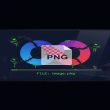Imagine hearing about the mysterious smile of the Mona Lisa, the surrounding Klimt kiss or Van Gogh’s famous Sunflowers without ever getting to know what they really look like.
For visually impaired, access to visual artworks is not simple – an option offered by some museums are descriptive guided tours, in which images are “translated” into words to allow people with cognitive difficulties to experience a different way of seeing the artwork.
However, some good news is that to expand the possibilities to enjoy the art without the vision, the project The Unseen Art now wants to explore another sense: TOUCH.
The idea of the Helsinki-based designer Marc Dillon is to use 3D technology to give visually impaired people an opportunity to experience the classical artwork. The designers will create 3D models that could be printed anywhere in the world and used both at their home as well as for display in galleries and museums.

“It would be a revolution to get blind people going to art galleries, people hate them because there is nothing there to touch!” says designer Marc Dillon.
These Wearable Glasses Lets Legally Blind People See Again
To make the project viable, the designer launched a crowdfunding campaign on Indiegogo. The goal is to reach $ 30,000 to enable the creation of the pieces – artists with experience with creating three-dimensional models are being invited to contribute their interpretations of classic works in 3D and create a large database of ready to print 3D models.

The work of these artists is made from a high-resolution photo of the art piece. Using a 3D modeling software, a version of the work is created, with emphasis on creating a deeply detailed model that can be experienced by visually impaired or the blind. With 3D printers, models can be created in different materials such as plastic, metal, sandstone, resin and ceramic.
The project can be supported until December 17.
3D technology has been helping people around the world. Earlier this year, scientists announced that they are working on an app called “NavCog” which will help the visually impaired to navigate through the sounds or vibrations generated on the smartphones.









